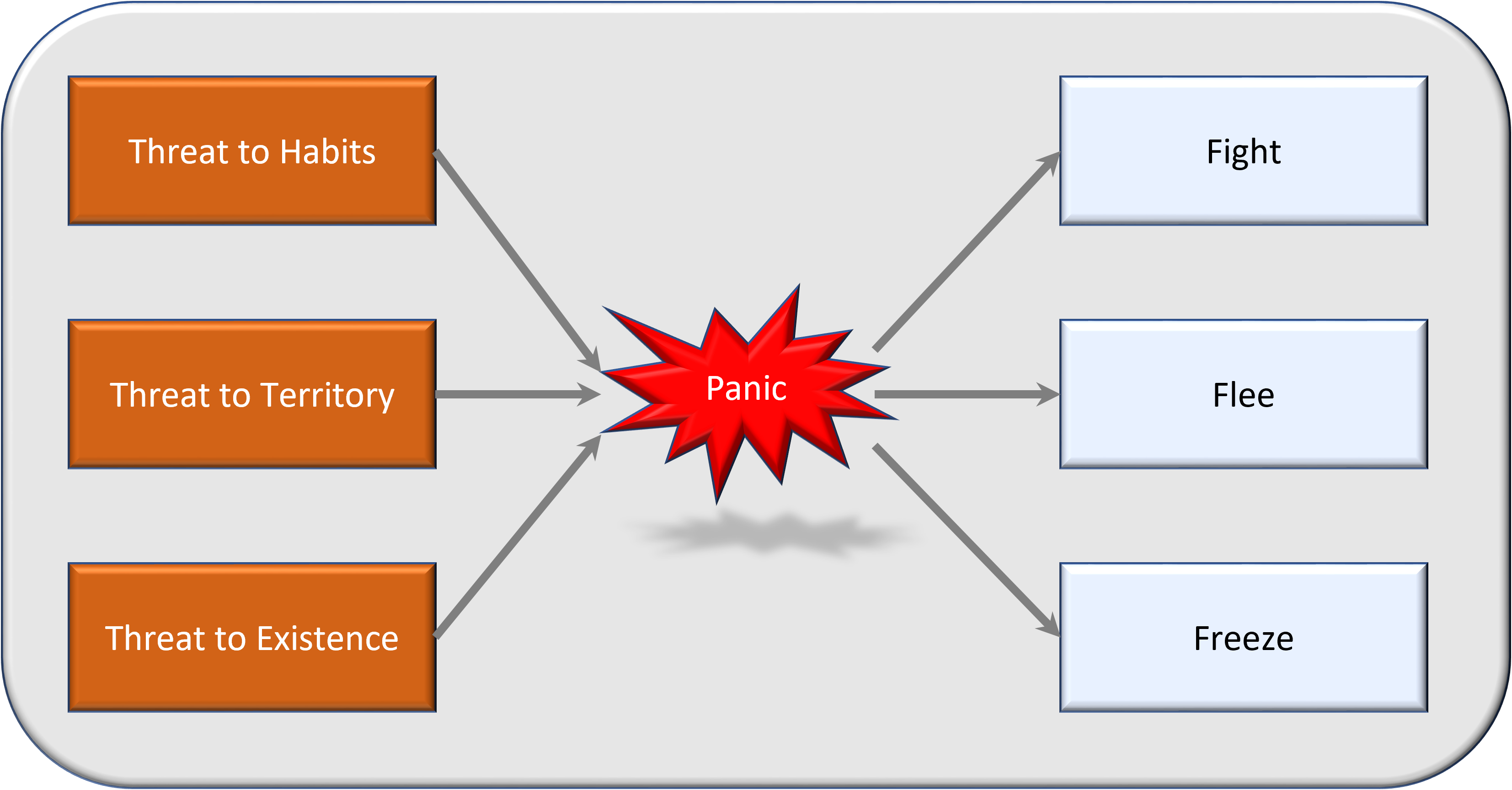Appearance
Lizard Brain
- Subject
- Agile Roles / Teaching the agile manager's role
- Participants
- Stakeholders, managers, everyone who has a leadership role, the agile teams (optional)
- Facilitator
- Agile coach / Agile master

Summary
Change and fear are connected to a deep level in our brains. When people identify a certain threat to their existence, their territory or habits, they adopt a panic mode and will try to fight, flee or they may freeze.
Definition
The name lizard brain is related to that panic reactions that are taking place in the so called part of our brains which we call the amygdala, which can be found just above the brainstem in all vertebrates. We share the amygdala with all mammals, birds and — as the name implies — with lizards. The amygdala in fact cancels rational thought by disconnecting the upper brain functions.
Motivation
This model helps understand why people behave irrationally during an agile change or transformation process.
Results
Understanding the behavior of team members and all stakeholders helps to take the right actions, both preventive and remedial.
Benefit
The agile roles must be defined very clearly, so that people can work well together on the same goals. Once the roles are taught and lived, people will fill them totally.
Procedure
The facilitator draws the model and starts with the word PANIC as being the center.
Around the PANIC-center he/she will place six other tiles.
On the left side: habit, territory, existence
On the right side: fight, flee, freeze
Under each tile, he/she should explain its meaning.
Habit: People are initially mistrustful to use agile, because they need to change their own working habits.
Territory: Scrum/Agile working can be a threat to one's territory. A loss of their decision power. They are forced to make their work transparent.
Existence: Scrum/Agile can be a threat to one's existence within the organization (Specialists who are not so special anymore).
Fight: Direct or indirect attacks. Offensive behavior during scrum meetings. Radiate fear, uncertainty, doubt etc.
Flee: Some people move to other teams or leave the company, as soon they hear that agile will be implemented.
Freeze: Many people become paralyzed and unable to produce anything valuable for months.
[Source: agile42.com]
Tools
Flipchart / Whiteboard
Hints
The behavior may change from one reaction to another e.g. first freeze then fight. And don't forget to think about yourself, your limbic cortex isn't different.
See also
Agile42 Coaches 'The Hitchhiker's Guide to Agile Coaching'